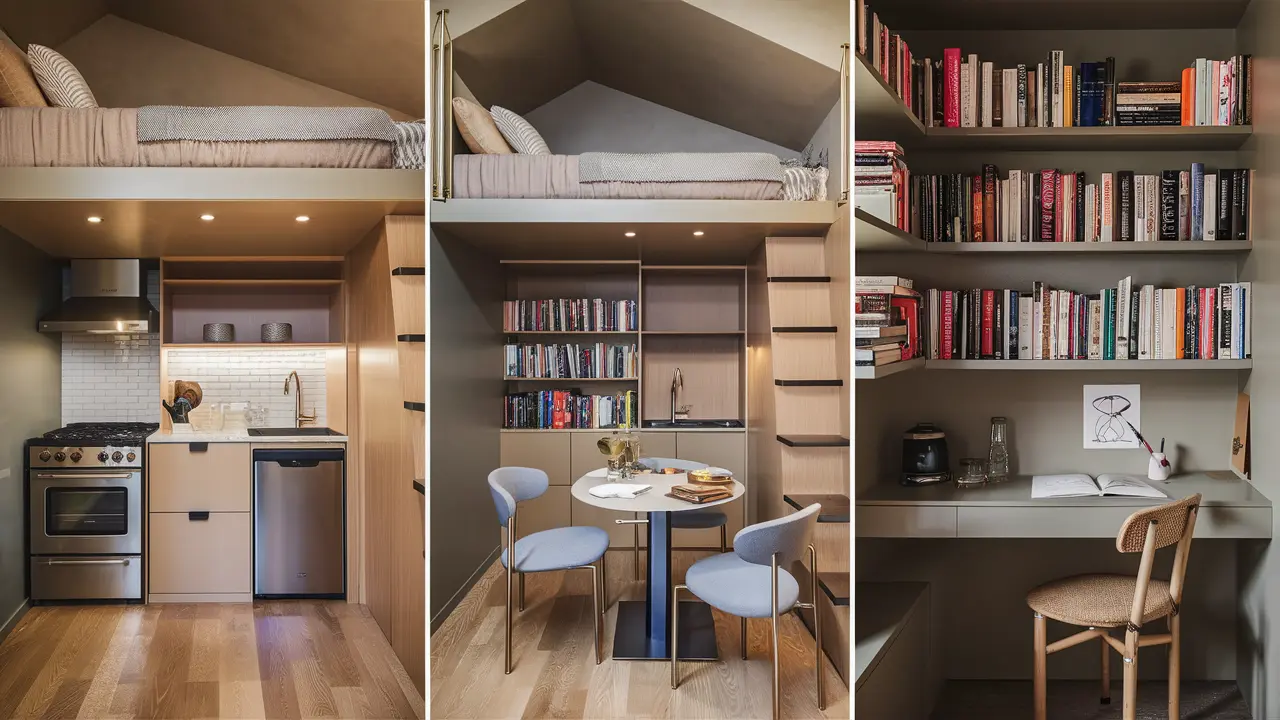Creating functional and beautiful small spaces involves careful planning, thoughtful design choices, and maximizing every square inch effectively. Here are some key tips to achieve this:
- Declutter and Simplify: Start by decluttering the space to create a clean and organized foundation. Remove unnecessary items and keep only what is essential. Minimalism can help create a sense of openness and reduce visual clutter.
- Multi-functional Furniture: Choose furniture pieces that serve multiple purposes. For example, a sofa bed or a daybed can serve as seating during the day and a bed for guests at night. Consider nesting tables, extendable dining tables, or ottomans with storage compartments to maximize functionality.
- Utilize Vertical Space: Take advantage of vertical space for storage and decor. Install tall shelves or bookcases to store books, decorative items, and even kitchen essentials. Wall-mounted hooks or pegs can keep items off the floor and free up valuable space.
- Lighting and Mirrors: Proper lighting is crucial in small spaces to make them feel larger and more inviting. Use ambient lighting, task lighting, and accent lighting strategically. Mirrors can also create an illusion of space by reflecting light and views, making the room appear larger and brighter.
- Optimize Layout: Plan the layout carefully to ensure efficient flow and functionality. Consider traffic patterns and leave enough space for movement. Arrange furniture to create distinct zones for different activities while maintaining an open feel.
- Use Light Colors and Patterns: Lighter colors on walls, ceilings, and furniture can make a small space feel airy and spacious. Soft hues like whites, creams, and pastels reflect light better than dark colors. If you prefer patterns, choose smaller-scale patterns to avoid overwhelming the space.
- Maximize Natural Light: Natural light can make even a small space feel more open and airy. Keep windows unobstructed with light, sheer curtains or blinds that can be fully opened during the day. Consider using glass doors or partitions to allow light to penetrate deeper into the space.
- Storage Solutions: Invest in clever storage solutions to keep clutter at bay. Utilize under-bed storage boxes, wall-mounted baskets or shelves, and built-in cabinets or wardrobes. Customizable modular storage systems can be tailored to fit specific needs and maximize available space.
- Scale and Proportion: Choose furniture and decor items that are appropriately scaled for the space. Avoid oversized furniture that overwhelms the room. Opt for sleek, streamlined designs that visually occupy less space while providing functionality.
- Personalize with Care: Incorporate personal touches and decor items that reflect your style without overcrowding the space. Choose a few statement pieces or artwork that contribute to the overall aesthetic while maintaining a cohesive look.
By combining these strategies, you can transform a small space into a functional and visually appealing environment that meets your practical needs and enhances your living experience. Each decision should prioritize both functionality and aesthetic appeal to create a harmonious and efficient small space.

